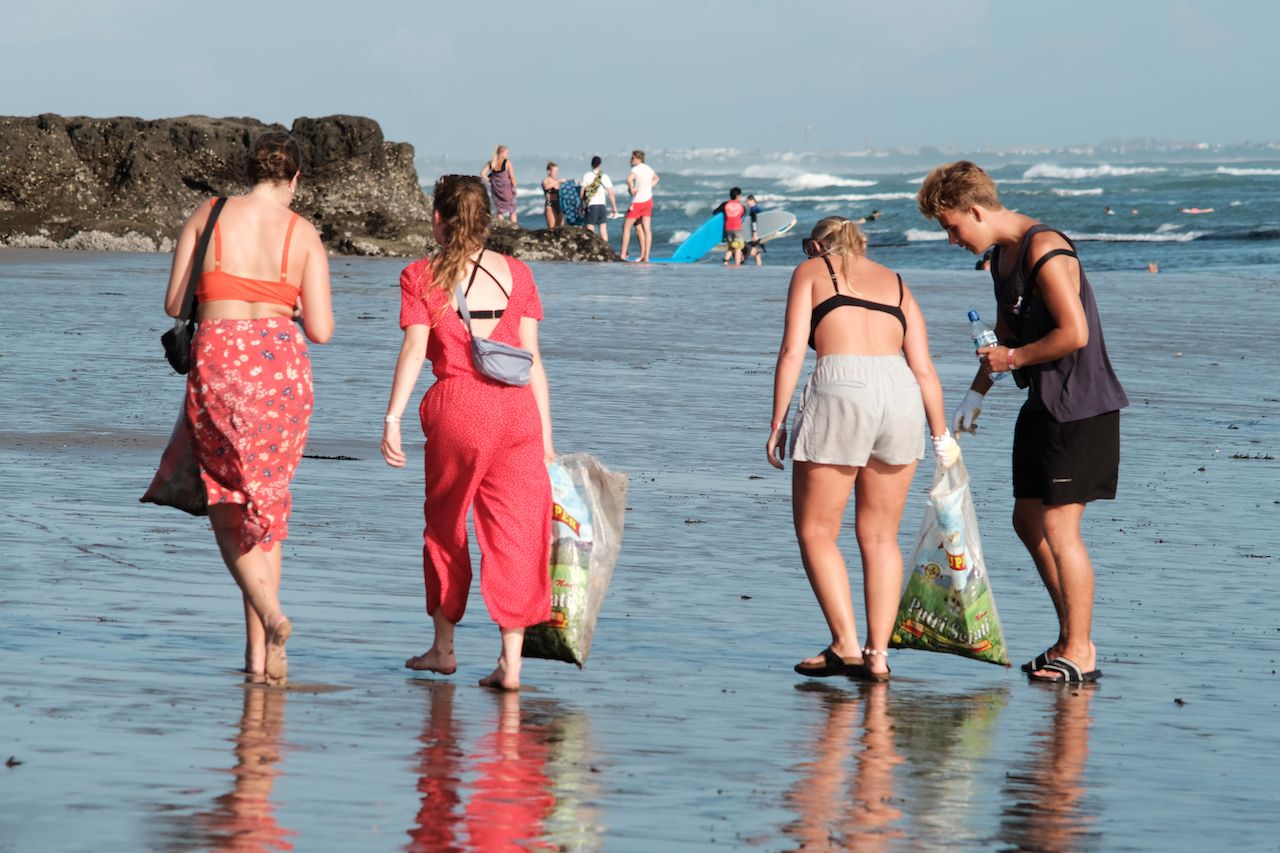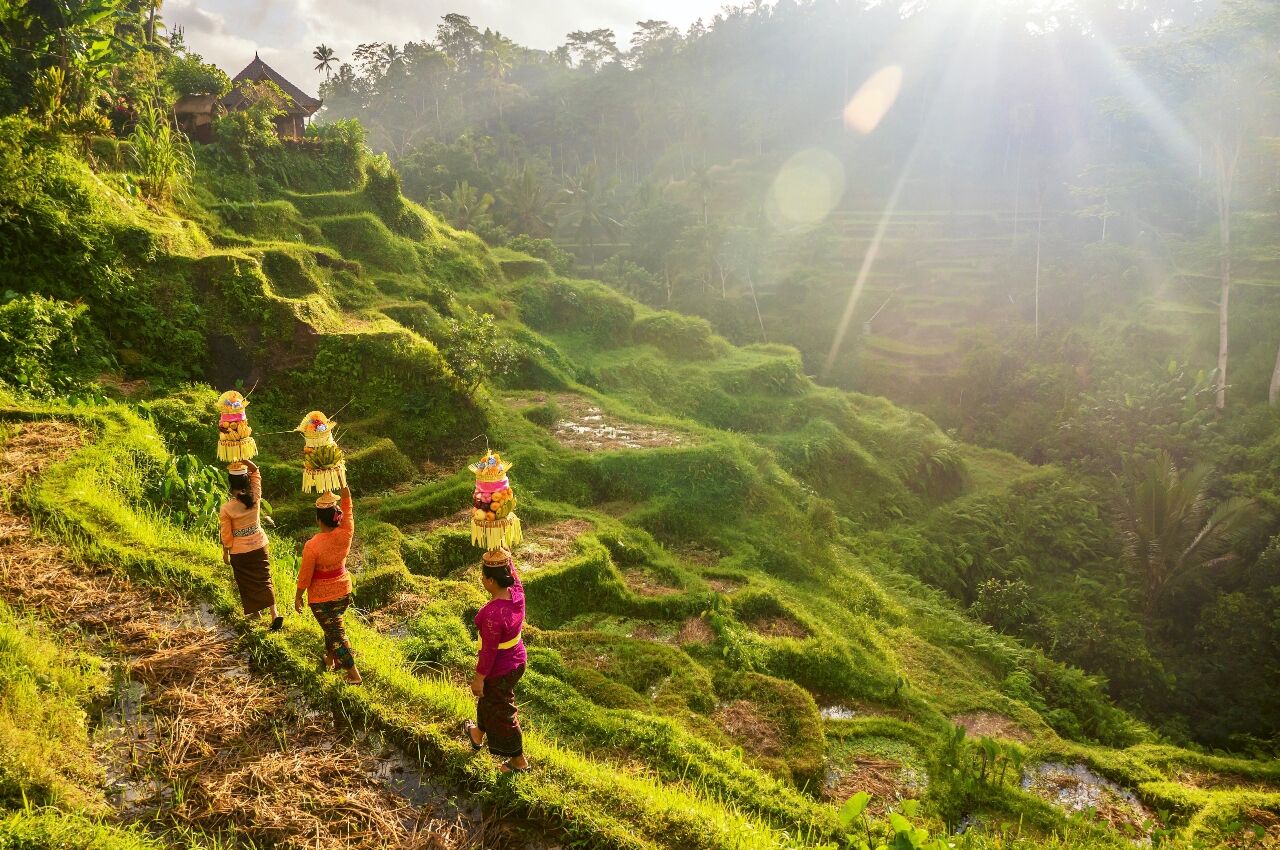Visitors who landed at Bali’s Denpasar airport in 2019, a year that welcomed more than six million international travelers to the island, were met with the picture of mass Bali tourism. Far from the serene, soul-stirring atmosphere promised in the pages of Eat, Pray, Love, a typical Bali vacation began with hours-long visa queues, a mire of stop-and-go traffic, and swarms of tourists seeking their social media-inspired photo op at all the major sights. It was becoming untenable, and came to an abrupt stop during the pandemic. According to the statistical research site Statista, the number of international arrivals dwindled to a scant 51 in 2021.


Bali Is Back With a More Local Experience Even Frequent Visitors Haven't Seen Before
Now, after more than two years of a pandemic-induced slow-down, the Island of the Gods is back, but a lot has changed.
We hope you love the hotels we recommend! Just so you know, Matador may collect a small commission from the links on this page if you decide to book a stay.
Don’t be seduced by those dreamy, but dated, vacation photos on Instagram

Photo: Kaspars Grinvalds/Shutterstock
In some cases, tourists are booking hotel rooms based on beautiful online imagery, only to find the reality a bit lacking. Most hotels are severely understaffed, resulting in a lack of upkeep and shuttered spas, shops and restaurants.
Anne, an expat living in Canggu, shared with Matador a recent experience she had booking a dive resort near Amed in northeast Bali.
“We showed up just after dark, and the few staff that were still there seemed genuinely surprised to have guests,” she says. “The furniture was a bit in disrepair, the restaurant wasn’t operating so they offered to make a home-cooked meal, and my friend had a used towel left on the floor of her room. Still, these minor issues don’t outweigh the incredible experiences you can have right now exploring a quieter, crowd-free Bali.”
For example, Anne and her friends were able to dive the popular Liberty Wreck — one of Bali’s most popular dive spots – twice, with only one or two other dive groups present.
The takeaway? Expect more than a few steps down from five-star service at most boutique hotels and homestays. However, there are much better prices and you can expect a more relaxed and unfussy brand of hospitality. If you’re willing to splurge a little, you can still access higher-end and full-service accommodations at places like COMO Uma Ubud, the Andaz Bali in Sanur or Jimbaran Puri, a Belmond Hotel.
Regardless of where you stay, fewer crowds mean cleaner, quieter and less crowded sights and beaches, at least for now.
A more local approach to tourism

Photo: JomNicha/Shutterstock
These days, the people you do find on the beaches or in the warungs and cafes tend to be locals. Tara Hammond, the group sustainability coordinator for regional group travel outfit Asian Trails, is happy that Bali now caters more to the domestic tourism market, a move that has positive implications for the environment while also helping the industry become more resilient in case of future downturns.
“The tourism landscape of Bali has changed radically over the past few years,” says Hammond, explaining how many hotels, restaurants and points of interest have either shut down or shifted to offerings that attract domestic visitors as a way to keep the lights on.
“Sanur beach, for example, is now set up to cater to mostly local families and is no longer lined with endless rows of tourist deckchairs and loud jet skis,” she says. “Instead one can now find local eateries serving Indonesian staples like nasi goreng or nasi campur, and signs advertising kayaks and kites for rent.”
Even as foreign travelers return to Bali, local hospitality workers might be reluctant to shift their offerings to cater entirely to a foreign market. In such unpredictable times, domestic tourists offer much more dependable business.
A spectacle of mass tourism remains on display in Canggu

Photo: chaelinjane/Shutterstock
One slight exception to the slow-down is the ever-hip Canggu, which remains crowded with expats doing jobs like online coaching or being a crypto-entrepreneur. These are the lucky few who were living in Bali when the pandemic hit or those who were able to make it to Bali before travel restrictions.
Their alternative lifestyles converging in one city center makes Canggu an essential stop for the type of classes, workshops, and experiences one can only find in Bali. These go beyond your typical sound healing or breathwork sessions to include things like ecstatic dance, which is an hour of sober solo dancing where participants are encouraged to surrender their bodies and minds to “flow” through spontaneous movement. Or Shabari workshops, where participants can expand their sexual kink to include this ancient Japanese rope-tying tradition, or simply pay for the privilege to maintain eye contact and hold hands with a complete stranger for an hour or so.
For all its charming coffee houses, trendy co-working spaces and decadent nightclubs, however, Canggu remains the place with some of the least desirable aspects of Bali still on display — including gridlock traffic and piles of plastic trash washing up on the beaches during the rainy season.
How tourists can help Bali achieve a better way forward

Photo: CherylRamalho/Shutterstock
If we are going to prevent the plague of mass tourism from reaching beyond Canggu into every part of peaceful Bali, future visitors will need to make intentional choices to protect the island’s environment and its people.
Piet Van Zyl, a travel industry sustainability consultant and chief regenerative officer for Selo Group, believes Bali’s reopening is a unique opportunity for the tourism industry to find a better path forward. Van Zyl, who has spent many years living on the island, witnessed first-hand how the pandemic devastated locals whose livelihoods depended on tourism, which accounts for about 80 percent of Bali’s economy. Going forward, he hopes visitors will do more to ensure locals are looked after.
“Before, people came to Bali to have sun and sea and fun and parties,” he says. “But people coming today should really engage more with the local people and the local culture. They should be asking questions about how an establishment is taking care of its water supply and land as well as the community within which it is operating.”
Van Zyl reflects on how, even as Balinese communities lost their main source of income, they never lost their famous friendliness. It’s one of the many reasons he hopes future tourists will consider whether their planned activities are helping or harming the environment and the Balinese who live here, and adjust accordingly.
“Make sure that wherever you’re going, you are taking care of and learning about the locals,” he says. “Attend ceremonies, take a cooking class, or speak with shop owners selling handcrafted wares. When you know a community, you can care for that community.”
If the pandemic proved anything, it’s that Bali is so much more than the hedonistic pleasure pursuits that have long attracted tourists. The real Bali lies in the hearts and traditions of its people, and there’s never been a better time to meet that Bali than right now.